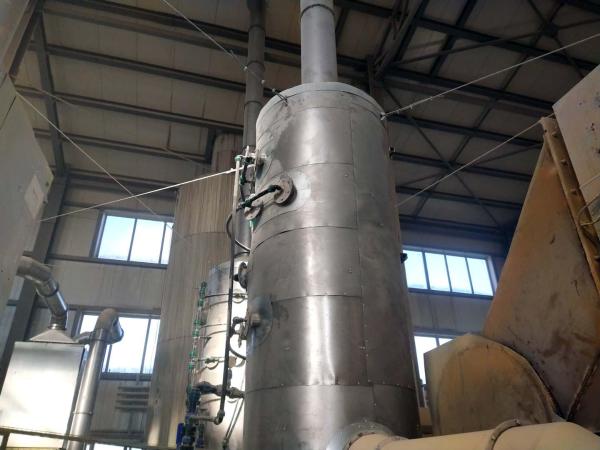Introduction to Wet Scrubber Equipment
Overview of Wet Scrubber Technology
A wet scrubber equipment, utilized in various industries, is essential for the purification of air and gases. This technology employs a liquid to effectively remove contaminants from a gas stream, thus serving as an efficient method for air pollution control.
Principles of Operation
At the heart of wet scrubber technology lies the principle of absorption. Contaminated gas is introduced into the scrubber unit, where it comes into contact with a liquid, typically water. The contaminants present in the gas are absorbed by the liquid, leading to the purification of the gas stream.
Components of a Wet Scrubber
Wet scrubbers consist of several key components, each playing a crucial role in the purification process. These include the inlet duct, scrubbing chamber, mist eliminator, demister, liquid recirculation system, and exhaust stack. Each component is carefully designed to maximize efficiency and performance.
Types of Wet Scrubbers
There are various types of wet scrubbers, each tailored to suit specific industrial applications and pollutant removal requirements. Common types include venturi scrubbers, packed bed scrubbers, spray tower scrubbers, and plate scrubbers. The selection of the appropriate type depends on factors such as the type of contaminants, gas flow rate, and space constraints.
Applications of Wet Scrubber Equipment
Wet scrubbers find widespread use across diverse industries, including manufacturing, chemical processing, power generation, and wastewater treatment. They are employed to control emissions of pollutants such as particulate matter, sulfur dioxide, nitrogen oxides, and volatile organic compounds, ensuring compliance with environmental regulations.
Advantages of Wet Scrubber Technology
One of the primary advantages of wet scrubbers is their high removal efficiency for a wide range of pollutants. Additionally, wet scrubbers can handle high temperatures and corrosive gases, making them suitable for challenging industrial environments. They also offer versatility in operation and can be customized to meet specific application requirements.
Challenges and Considerations
While wet scrubbers offer effective pollution control, certain challenges must be addressed during their design and operation. These include proper liquid management to prevent carryover, maintenance of optimal pH levels, and energy consumption associated with liquid circulation and treatment. Additionally, the disposal of scrubber effluent requires careful consideration to minimize environmental impact.
Future Trends in Wet Scrubber Technology
As environmental regulations become increasingly stringent, the demand for efficient air pollution control technologies like wet scrubbers is expected to rise. Future developments may focus on enhancing scrubber efficiency, reducing energy consumption, and exploring alternative scrubbing liquids to improve performance and sustainability.
About Torch-Air: Your Wet Scrubber Solution
At Torch-Air, we specialize in the design and manufacture of high-quality wet scrubber equipment for industrial air pollution control. Our expertise in this field enables us to offer innovative solutions tailored to your specific needs.
If you're seeking effective air pollution control solutions, we invite you to consult with our team at Torch-Air. Whether you're facing challenges related to particulate matter, acidic gases, or volatile organic compounds, we're here to provide expert guidance and support. Contact us today to explore how our wet scrubber technology can enhance environmental compliance and contribute to cleaner air for all.
Conclusion
Wet scrubber equipment plays a vital role in mitigating air pollution in industrial settings. By effectively removing contaminants from gas streams, wet scrubbers contribute to cleaner air and environmental sustainability. As industries strive for compliance with stringent regulations, the continued advancement of wet scrubber technology remains imperative.

